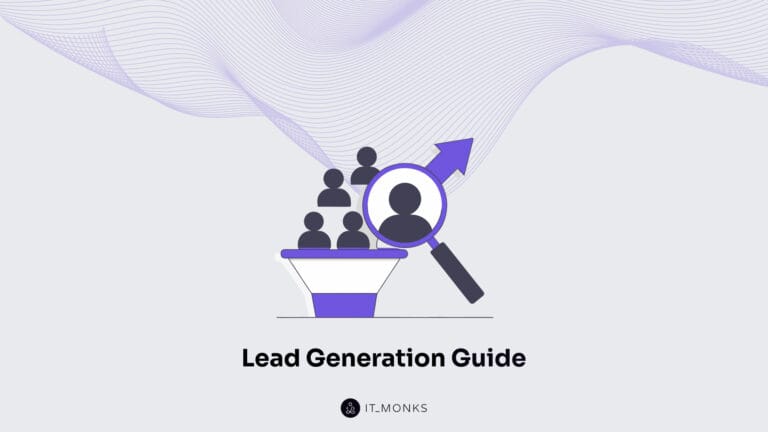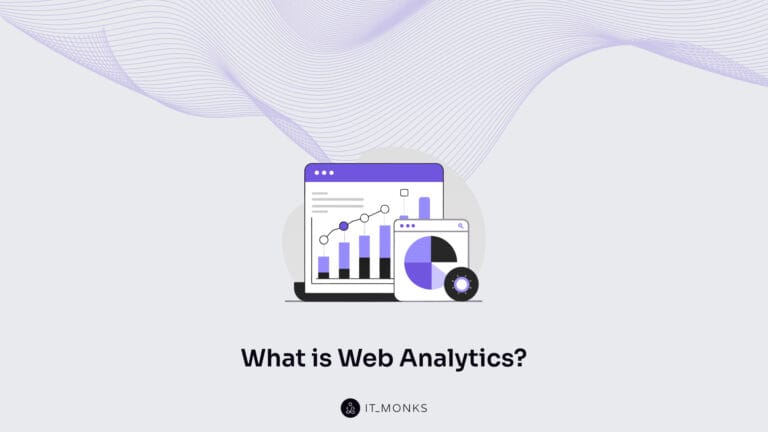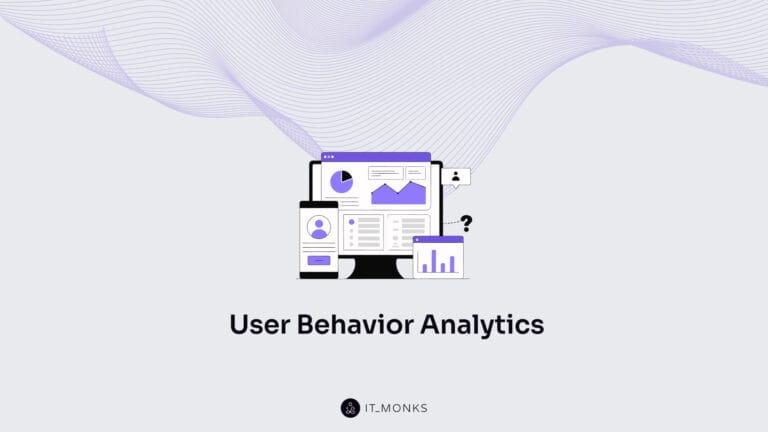Enterprise Hosting DDoS Protection
Table of Contents
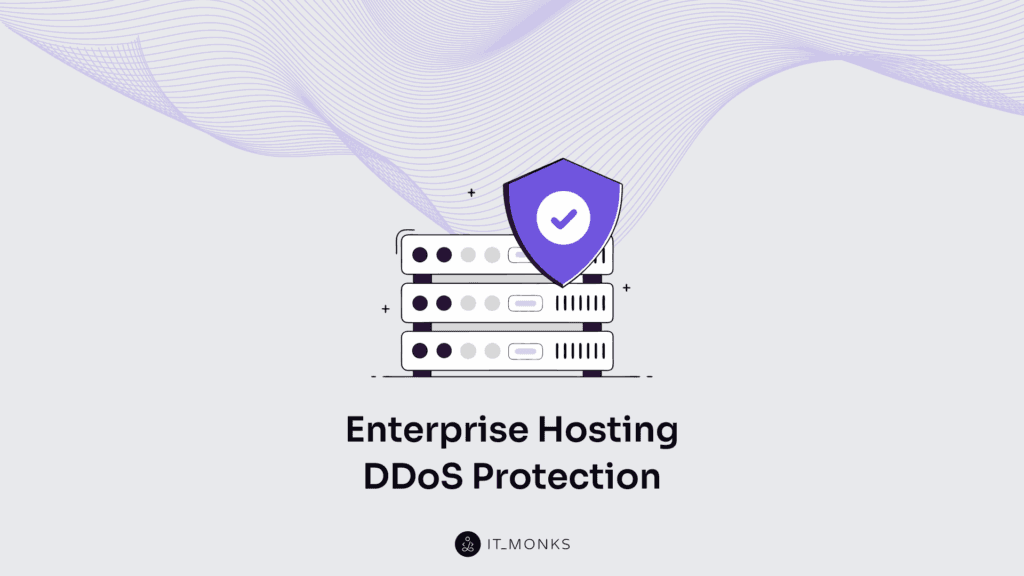
Enterprise hosting DDoS protection is a critical safeguard for maintaining the availability and stability of an enterprise website within a high-capacity hosting environment. It is designed to detect, absorb, and mitigate distributed denial-of-service attack vectors before they can overwhelm infrastructure resources. By integrating advanced traffic filtering and network-layer defense, this protection prevents malicious traffic from exhausting bandwidth capacity, which in enterprise hosting can reach mitigation capacities of 500 Gbps or more.
The effectiveness of a mitigation service is often demonstrated through such defences as sustaining targeted volumes of attack traffic, filtering harmful requests with minimal latency, often within milliseconds, and restoring legitimate traffic flow without service degradation. These protections often operate across redundant network paths to ensure uninterrupted mitigation even if a segment of the hosting infrastructure is compromised.
Strict SLA commitments define maximum response times in seconds or minutes, ensuring that any attack is countered rapidly enough to preserve uptime. Without such measures, a sustained DDoS incident can render an enterprise website unreachable for hours, eroding customer trust and causing cascading operational disruptions.
For large-scale business websites, uninterrupted service is not only a performance metric but also a protection against financial loss, reputational harm, and operational disruption. Within enterprise website development, DDoS protection at the hosting level is therefore an essential component, forming the security foundation that supports sustained performance and continuous availability for mission-critical digital operations.
Types of DDoS Attacks
Types of DDoS attacks targeting enterprise hosting are classified into 3 primary categories recognized across the industry: volumetric, protocol, and application layer.
Each exploits a different system resource within the hosting infrastructure to disrupt service availability. Together, types of DDoS share the objective of degrading performance or causing downtime for enterprise websites, but the mechanisms they use vary significantly.
Volumetric attacks aim to saturate network bandwidth, often measured in hundreds of gigabits per second or millions of packets per second. By overwhelming the capacity of network links, they generate congestion across the hosting environment, preventing legitimate traffic from reaching the servers and jeopardizing uptime for mission-critical enterprise applications.
Protocol attacks target the way enterprise hosting systems handle network protocols at OSI layers 3 and 4. In enterprise environments, this includes targeting the connection state capacity of load balancers, firewalls, and intrusion prevention systems that manage high-volume traffic flows. These attacks manipulate weaknesses in packet-handling processes, exhausting resources like connection tables or load balancer capacity, which disrupts core network functions even when total bandwidth consumption is lower than volumetric events.
Application layer attacks focus on Layer 7, where the enterprise website’s application logic operates. These events may register minimal bandwidth consumption at the network layer, making them harder to detect without deep application-layer monitoring. Such attacks overload web servers, APIs, or database requests with traffic patterns crafted to consume maximum processing power, leading to slowdowns or complete service outages without necessarily triggering network-layer bandwidth alarms.
Volumetric Attacks
Volumetric attacks in enterprise hosting are a specific DDoS category in which the attacker’s primary method is to saturate the target’s available network bandwidth. Their defining characteristic is the delivery of massive volumes of inbound traffic, often in the range of hundreds of gigabits to multiple terabits per second, or tens of millions of packets per second, until the available bandwidth between hosting infrastructure and the internet is saturated.
For example, an enterprise data center link rated at 800 Gbps can be incapacitated by a coordinated 1.2 Tbps inbound flood sustained over several minutes. Common methods include UDP floods, ICMP floods, and amplification techniques such as NTP, DNS, or CLDAP reflection, where relatively small requests trigger disproportionately large responses toward the target.
For enterprise environments, even high-capacity links with robust hardware can be incapacitated if the attack volume exceeds mitigation thresholds, resulting in complete service unavailability, loss of enterprise website accessibility, and potential downstream failures to dependent systems. Mitigation at this scale relies on traffic scrubbing networks, high-capacity filtering systems, and anycast routing to distribute and absorb malicious load before it reaches critical infrastructure.
Protocol Attacks
Protocol attacks in enterprise hosting are a class of DDoS attacks that exploit weaknesses or resource limitations in the network and transport layer protocols. These attacks manipulate the way network devices handle TCP/IP communication, targeting mechanisms like the TCP three-way handshake, packet reassembly, or ICMP request processing.
A YN flood, for example, overwhelms the connection table by initiating massive numbers of incomplete handshakes, driving packet-per-second rates and concurrent connection counts beyond device limits, while fragmented packet attacks strain reassembly buffers.
Ping of Death corrupts protocol compliance by sending oversized ICMP packets, and Smurf attacks abuse ICMP echo requests to trigger amplified responses from multiple hosts. Within enterprise hosting environments, such attacks can overload firewalls, disrupt load balancer operations, or force routers into failure, even in high-capacity data centers.
The impact cascades to enterprise website availability when critical network devices fail under the strain. Mitigation depends on protocol-aware filtering, precise rate limiting, and resource allocation safeguards designed to preserve connection handling capacity and prevent exhaustion of processing paths.
Application Layer Attacks
Application layer attacks on enterprise hosting DDoS assaults that target the top of the OSI stack (Layer 7), specifically the application services (HTTP, HTTPS, DNS, API endpoints) that enterprise websites depend on.
These attacks overload the software stack by generating a flood of requests, often reaching hundreds of thousands of requests per second (RPS), that appear legitimate yet are crafted to exhaust finite processing resources such as CPU cycles, memory allocation, database connections, or the application thread pool.
Common examples include high-volume HTTP GET or POST floods that drive up concurrent connections, slowloris attacks that stall session handling, DNS query floods that strain resolution services, and abusive API calls against enterprise hosting API endpoints, designed to trigger heavy database query loads. Because the traffic can simulate genuine user behavior, filtering it at the network level is ineffective, and the strain emerges within the hosting infrastructure itself.
In enterprise hosting environments, such assaults can overwhelm and stall critical operations like e-commerce search queries or customer portal form submissions, leading to degraded uptime and service availability. By depleting the application thread pool or saturating database connection limits, these attacks directly undermine enterprise website operational continuity.
Mitigation in these scenarios relies on application-aware controls such as behavioral traffic analysis, fine-grained request rate limiting, and deployment of web application firewalls capable of interpreting and blocking malicious patterns without impacting legitimate high-volume business traffic.
Detection Methods
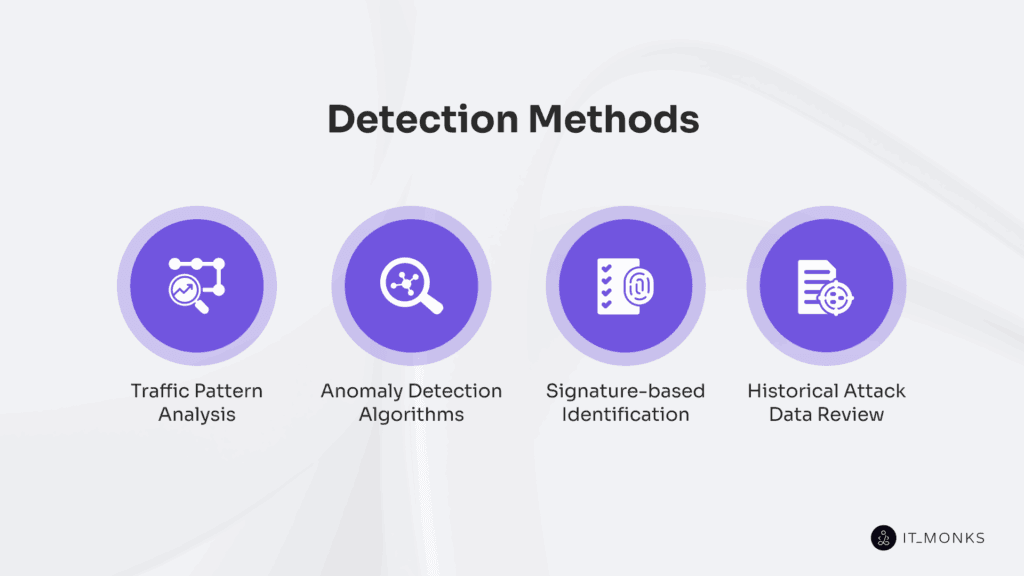
DDoS detection methods in enterprise hosting form the first operational layer in preventing service interruptions for large-scale business websites. At this stage, the objective is to monitor and identify traffic patterns that deviate from a known baseline profile, flagging them for further evaluation before they degrade service quality.
Within enterprise hosting environments, where monitoring intervals are often measured in seconds and acceptable detection latency is counted in milliseconds, the accuracy and speed of identification directly affect the effectiveness of mitigation and the ability to meet SLA commitments.
The detection process functions by continuously monitoring packet flows and comparing live traffic data against established network behavior. This evaluation extends beyond simple volume analysis to include multiple traffic behavior indicators used to flag potential threats.
The primary detection methods can be grouped into four distinct yet complementary types, each designed to identify different threat vectors. In practice, enterprise hosting providers often adopt a hybrid framework that combines multiple detection methods to address the varied nature of attacks.
Together, these methods position detection as a decisive factor in maintaining enterprise website uptime and reliability under potential attack conditions.
Traffic Pattern Analysis
Traffic pattern analysis is a detection method that establishes and monitors a baseline of normal network activity for enterprise hosting environments.
This profile is shaped by measuring bandwidth utilization in Gbps, packet rate in pps, request rate in RPS, geographic distribution of requests, and protocol distribution across services. The metrics are tracked using advanced monitor tools for enterprise hosting, ensuring continuous visibility into infrastructure-level traffic behaviors.
Such baselines are quantified using defined threshold values for each monitored parameter, such as bandwidth peaks, typical protocol ratios, and geographic request norms. Establishing a baseline requires evaluating historical data to account for enterprise-specific patterns, including traffic from multiple data centers, CDN edge nodes, high-activity business hours, and seasonal demand fluctuations.
The monitoring system continuously evaluates live metrics against these threshold norms at defined intervals to detect statistically significant anomalies. Significant deviations, such as a sustained 30% increase in inbound UDP packets from a single ASN, are flagged as potential DDoS indicators.
This early detection process integrates with automated alerting tools to signal anomalies that could indicate the onset of a DDoS event, forming a critical layer in the enterprise hosting DDoS detection framework that protects enterprise website availability. By identifying deviations early, traffic pattern analysis contributes directly to sustaining enterprise website uptime and operational continuity during attack attempts.
Anomaly Detection Algorithms
Anomaly detection algorithms in enterprise hosting are automated, intelligent systems that identify irregularities in network traffic patterns, which may signal a DDoS attack. These systems compare real-time metrics against baselines derived from historical performance and learned behavior profiles.
Key detection variables include packet rate, request frequency, connection duration, irregularities in protocol headers, geographic dispersion of incoming requests, and variations in protocol usage. By evaluating these indicators, the detection system can flag abnormal conditions before they escalate into downtime or resource saturation, affecting enterprise website uptime assurance.
Detection strategies vary according to operational requirements and infrastructure complexity. Rule-based methods trigger alerts when predefined thresholds are exceeded, such as a sudden spike in packets per second or requests per second beyond baseline variance.
Behavior-based models track trends over time, identifying anomalies through statistical analysis of standard deviation and rate changes. Machine learning models, both supervised and unsupervised, classify traffic patterns through clustering, pattern recognition, and predictive analytics. These approaches improve detection accuracy over extended observation periods.
In enterprise hosting, anomaly detection must handle global traffic sources, multi-tenant environments, and high variability in legitimate usage without inflating the false positive rate. Low detection latency is critical so that flagged anomalies can initiate mitigation workflows before attacks saturate infrastructure resources. This rapid response is essential for maintaining uptime and service quality for enterprise websites.
Such algorithms integrate into the broader DDoS detection framework, providing an intelligent decision-making layer that supports automated traffic filtering, load distribution, and uptime assurance for enterprise websites.
Signature-based Identification
Signature-based identification in enterprise hosting is a detection method that compares incoming traffic patterns against a database of known DDoS attack signatures. An attack signature is a verifiable and classifiable pattern in elements such as packet headers, payload composition, timing intervals, or indicators of protocol misuse. These patterns function as the core attributes used in detection.
Common signatures include fixed-rate SYN flood sequences, malformed packet arrangements, repeated and identical HTTP request patterns, and distinctive amplification protocol markers.
The enterprise hosting detection system performs real-time matching, typically achieving a detection latency under 50 ms, and blocks traffic that matches a verified DDoS signature. Maintaining this performance level requires frequent update intervals from global threat intelligence feeds. They supply newly identified DDoS signatures, which are rapidly distributed across all enterprise hosting data centers.
As part of a broader enterprise hosting protection system, when integrated into an enterprise-grade IDS or IPS, this process filters and classifies hostile traffic before it can disrupt site availability. While its scope is limited to known attack forms, signature-based identification remains an essential component in layered DDoS protection, ensuring continuous uptime and resilience for enterprise websites.
Historical Attack Data Review
Historical attack data review in enterprise hosting is the process of analyzing recorded DDoS incidents to refine detection accuracy, reduce false positives, and improve mitigation strategies in enterprise hosting environments. This process involves storing and analyzing a wide range of data sources, such as detailed event logs, flow records, packet captures, and post-incident reports, including analysis of events like an 850 Gbps UDP flood targeting DNS services.
Key metrics include the classification of attack vectors, measurement of peak bandwidth in Gbps, incident duration in minutes or hours, targeted services, geographic source mapping, and time-of-day occurrence patterns. These patterns are then plotted into incident timelines to expose recurring threat cycles and refine mitigation scheduling. Such insights enhance detection system optimization, making response logic more adaptive and less prone to false positives.
Within large-scale enterprise hosting operations, historical attack data review is often embedded in broader threat intelligence frameworks, where findings are shared across multiple data centers and upstream providers. This integration transforms each recorded incident into both a post-mortem analysis and a predictive resource, reinforcing the resilience of enterprise hosting infrastructure and, in turn, safeguarding enterprise websites against future DDoS campaigns.
Mitigation Strategies
DDoS mitigation strategies in enterprise hosting are coordinated defenses designed to sustain enterprise website availability by controlling the flow of hostile traffic while preserving legitimate access. In this context, mitigation refers to the combined application of methods that filter or scrub malicious packets, throttle excessive requests, and distribute incoming loads across multiple resources to prevent any single point from becoming overwhelmed.
The primary objectives are to shield uptime, maintain compliance with service level agreements, and protect user experience from performance drops during an attack. Enterprise-scale protection systems often rely on a layered approach, applying multiple tactics in parallel so that volumetric, protocol, and application-layer threats are countered regardless of their source or complexity. This redundancy across mitigation layers ensures that no single technique becomes a point of failure under coordinated attack vectors.
Within this overarching strategy, traffic filtering and scrubbing are used to remove harmful data at adaptive filtering thresholds calibrated per flow intensity and signature confidence level. Rate limiting is applied to regulate request flow and contain surges. Load distribution is employed to spread processing demand across nodes in a 4:2:1 ratio based on server health and geographic latency proximity, triggering rapid failover when needed.
Failover mechanisms typically activate within a 300ms response window, ensuring minimal disruption during node exhaustion events. Each of these methods functions as part of an integrated mitigation capacity that defends the hosting environment’s operational continuity even under extreme Gbps-level pressure. This mitigation capacity can handle sustained volumetric loads exceeding 1.5 Tbps while maintaining latency below 2 milliseconds, aligning with enterprise SLA thresholds.
Traffic Filtering and Scrubbing
Traffic filtering and scrubbing are the primary frontline tactics for removing malicious packets from inbound traffic streams before they can overwhelm the enterprise hosting infrastructure.
All inbound traffic is routed through filtering systems, on-premise, cloud-based scrubbing centers, or hybrid setups that inspect packets for signs of attack, including malicious signatures, protocol violations, and behavioral anomalies. Each system type applies packet inspection policies based on deployment constraints and capacity thresholds.
Filtering starts with packet header checks, followed by deep packet inspection (DPI) that examines payloads up to 1,500 bytes, and protocol compliance analysis. These layers work together to discard harmful packets and forward clean traffic. Behavioral filters enforce baseline request behavior thresholds to ensure only clean, compliant traffic proceeds, especially during application-layer attacks.
Enterprise-grade setups handle high volumes, often over 1 Tbps, while keeping latency under 3 ms. Filtering engines must block over 99.5% of threats while maintaining a false positive rate under 1%, ensuring valid user requests are never discarded. The system must maintain full functionality even under peak loads without disrupting the user experience. This level of operational integrity is essential for meeting SLA-defined uptime and performance guarantees during active mitigation.
Effective filtering and scrubbing are tied directly to SLA performance. When tuned properly, they support uptime guarantees and prevent service degradation during DDoS events.
This makes traffic filtering a foundational predicate in the enterprise DDoS mitigation hierarchy.
Rate Limiting
Rate limiting in enterprise hosting is a DDoS mitigation tactic that caps the number of requests or connections a client or IP range can make within a set time window. This control prevents traffic floods from overwhelming infrastructure during DDoS attacks. It restricts excessive access without shutting out legitimate users. Limits are typically applied in terms of requests per second (RPS), connections per second (CPS), or bandwidth per IP, often starting at the edge, through load balancers, WAFs, or application gateways.
These thresholds aren’t fixed; enterprises adjust them based on time, traffic source, or activity type. Trusted IPs may be whitelisted, while unknown or suspicious ones face tighter restrictions. Integration with anomaly detection allows dynamic tuning, increasing RPS caps during known business peaks or tightening them during traffic anomalies.
A typical baseline might restrict each IP to 500 RPS and 200 concurrent connections, with adaptive scaling to respond to behavior shifts in real-time. Enforcement typically occurs with sub-100ms latency to prevent user-visible delays while still neutralizing malicious throughput.
By throttling requests before they reach the application layer, rate limiting throttles and filters malicious request vectors across the volumetric and application layers. It protects bandwidth, CPU cycles, and session pools, all critical to keeping enterprise websites stable under pressure. Proper tuning is essential to avoid introducing latency or service friction for legitimate users.
Load Distribution Across Servers
Load distribution across servers in enterprise hosting is a DDoS mitigation technique that supports scaling enterprise hosting by spreading incoming traffic evenly (or strategically) across multiple servers or data centers to prevent overload and maintain service availability. This setup prevents any single server from becoming a failure point during high-load events. Enterprise-grade load balancers manage the routing of requests using strategies like round-robin, weighted allocation, or requests-per-second thresholds.
Beyond basic load balancing, advanced routing methods further enhance traffic resilience. As part of enterprise load distribution, DNS-based traffic management and anycast routing add another layer by directing traffic to the nearest or least-burdened node. These methods improve response times and absorb traffic spikes by using proximity-aware logic and real-time health checks. Failover between nodes typically occurs within milliseconds, maintaining session continuity.
In DDoS scenarios, distributing traffic limits the blast radius of attacks. Instead of overwhelming one location, the load is absorbed across multiple endpoints. For enterprise systems, this often means routing traffic between clusters that can each support up to 50,000 concurrent sessions, with distribution ratios adjusted based on server performance metrics. Every cluster is optimized to handle up to 10,000 RPS, with failover latencies typically under 3 milliseconds, ensuring low-lag routing during high-load incidents.
This method also allows selective routing, directing suspicious traffic to scrubbing centers while keeping clean traffic on the main path. Combined with filtering and rate limiting, load distribution strengthens the overall mitigation stack and ensures uptime consistency for enterprise websites under large-scale attack conditions.
Infrastructure-Level Protections

Infrastructure-level protections for hosting enterprise environments are pre-integrated architectural components engineered to uphold DDoS resilience as part of the baseline service. These protections operate at the network and transport layers and are deployed across geographically distributed infrastructure to maintain operational continuity of enterprise websites during high-volume disruptions.
Such architectural embedding ensures resilience at scale, maintaining service uptime even under 1.5 Tbps of volumetric pressure with failover times under 5 milliseconds.
Rather than reacting to incoming threats, these design features are proactively embedded into the hosting framework, offering always-on capacity buffering, intelligent traffic routing, and layered filtering at scale. These protections play a critical role in maintaining uptime under strain and preserving SLA commitments by distributing risk and isolating potential failure zones.
Unlike mitigation strategies that activate post-detection, infrastructure-level designs are persistent, minimizing the attack surface and reducing failover time to under 5 milliseconds, even under multi-vector strikes exceeding 1 Tbps.
Enterprise website availability benefits from the inherent fault tolerance of such systems, which are designed to replicate and route traffic through alternative paths without administrative overhead. This routing flexibility is reinforced by geographic redundancy, ensuring distributed edge nodes share the load seamlessly across regions.
Enterprise-grade DDoS resilience is anchored in four architectural constructs that together form the foundation of always-on infrastructure-level protection. Network redundancy safeguards availability through duplicated data paths and failover mechanisms built into the hosting architecture. Anycast routing intelligently distributes traffic to the nearest healthy node, reducing latency while segmenting attack volumes across a dispersed edge network.
Firewall integration enforces perimeter-level access controls within the hosting stack, filtering malicious payloads before deeper application-layer processing occurs. IDS/IPS integration delivers real-time traffic analysis, identifying both signature-based and behavioral anomalies at critical ingress points. Together, these components form the infrastructure bedrock that shields enterprise websites from operational degradation during DDoS events.
Network Redundancy
Network redundancy in enterprise hosting is a foundational infrastructure-level protection, designed to ensure continuous connectivity and uptime even when a DDoS attack or other failure disrupts one or more network paths. This design includes redundant links, diverse upstream providers, and geographically separated data centers.
Each component, whether a redundant link or a diverse upstream, contributes to a live failover system capable of rerouting traffic in under 3 milliseconds during disruption. Routing protocols and failover logic, supported by active routers and switches, are configured to shift load instantly, avoiding downtime.
A standard enterprise setup may include 4 or more redundant routes, with aggregate backbone capacity often exceeding 1 Tbps. This excess capacity enables enterprise hosting platforms to maintain SLA-defined uptime levels even under volumetric DDoS conditions.
Redundancy functions as a frontline defense, not a recovery tool. It proactively bypasses affected paths, sustaining access to enterprise websites in real time and supporting SLA uptime metrics during large-scale disruptions.
Anycast Routing
Anycast routing in enterprise hosting is an infrastructure-level defense that distributes incoming requests to multiple geographically dispersed servers using the same IP address. It distributes inbound requests across a globally dispersed network of servers by advertising a single IP address from multiple geographic locations using BGP.
This technique directs user traffic to the closest or most responsive server, reducing latency during normal operation and fragmenting DDoS traffic during attacks. By spreading hostile traffic across all nodes rather than concentrating it on a single data center, anycast increases the system’s absorption capacity and enhances mitigation efficiency.
Within an enterprise hosting infrastructure, anycast typically operates in coordination with scrubbing centers, redirecting suspicious or malicious packets to specialized facilities for inspection and filtration. Redundancy is built into this routing layer through node overlap and failover logic, preserving service continuity if one or more nodes become unreachable.
This redundancy model supports sub-second failover times in most regional clusters, ensuring session persistence even during active failovers. The number of active anycast nodes is a measurable parameter tied directly to resilience; more nodes improve geographic coverage and reduce average user latency during peak attack windows.
For example, a setup with 12 global nodes has demonstrated a 25 ms latency improvement under load and a more favorable distribution ratio that avoids traffic bottlenecks.
At enterprise scale, the deployment of anycast routing reinforces hosting SLAs related to uptime and performance, particularly during volumetric DDoS events. For instance, during a recent 200 Gbps DDoS simulation, SLA thresholds for latency and availability were maintained across all zones, validating the system’s SLA compliance during volumetric attacks. The routing system serves as both a traffic distributor and a protective shield, absorbing and deflecting excess traffic before it compromises application-layer availability.
Positioned as a critical component of infrastructure-level protections, anycast contributes directly to enterprise website availability and continuity, ensuring responsiveness across diverse user regions even during hostile traffic surges.
Firewall Integration
Firewall integration is an infrastructure-level defense that embeds packet and connection filtering directly into the enterprise hosting environment. This setup filters Layer 3/4 packets and blocks traffic by geography.
The functions of firewall integration are coordinated to enforce traffic control rules more precisely under DDoS conditions, including protocol enforcement, connection limiting, and rate-based thresholding, all of which are key for mitigating DDoS at the edge.
Integrated firewalls manage central policies across distributed data centers, reducing configuration gaps. With rule capacities reaching 50,000 and filtering rates up to 120 million packets per second at under 2 ms latency, they maintain high-performance filtering without compromising enterprise hosting responsiveness.
In enterprise environments, firewalls support broader infrastructure defense by working alongside IDS/IPS and scrubbing centers. They pre-filter malicious traffic before it reaches deeper layers, ensuring uptime and reinforcing enterprise website resilience during sustained volumetric attacks.
IDS/IPS Integration
IDS/IPS integration is the deployment of intrusion detection systems (IDS) and intrusion prevention systems (IPS) within the enterprise hosting infrastructure to identify and respond to malicious traffic patterns, including DDoS-related anomalies, before they cause service disruption.
IDS monitors network traffic for abnormal behaviors, such as protocol misuse, packet fragmentation, or connection floods, and flags threats. IPS takes this further by actively blocking such traffic inline. Both systems perform Layer 3, 4, and 7 traffic analysis to detect anomalies in real-time, correlating observed patterns with dynamic threat signature databases to maximize detection precision.
For DDoS scenarios, these systems detect anomalies like rapid connection spikes or malformed packets, using real-time analysis combined with threat intelligence feeds to trigger mitigation workflows automatically. Integration ensures they work in sync with firewalls, routing logic, and scrubbing centers.
Detection-to-mitigation response times can stay under 200 ms, aligning with strict uptime SLAs. When threats are detected, automated triggers can adjust firewall rules, reroute traffic, or apply rate limits without delay.
At the enterprise level, performance benchmarks matter; IDS/IPS platforms often support inspection throughputs of up to 800 Gbps, with packet analysis rates above 100 Mpps. Such capacity ensures inline defenses do not bottleneck traffic during peak loads or under volumetric attack conditions. This setup adds a dynamic layer of defense that helps maintain the operational integrity of enterprise websites against DDoS threats.
SLAs for DDoS Protection
DDoS protection SLAs in enterprise hosting define the provider’s measurable obligations during an attack. These agreements go beyond general uptime language; they commit to specific performance thresholds tied directly to business continuity for enterprise websites, and these thresholds are enforced through contractual guarantees.
A typical SLA outlines how fast an attack must be detected, how quickly mitigation starts, and what scale of attack is covered. Detection time may be specified in milliseconds, mitigation initiation in seconds or minutes, and coverage in Gbps or Tbps. These metrics aren’t estimates; they’re enforced terms, often tied to financial penalties or service credits if unmet.
For enterprise hosting, such guarantees are operational safeguards. They reduce ambiguity and set clear expectations during high-impact incidents. Without such guarantees, providers default to vague “best effort” approaches, which leave websites vulnerable during peak risk. Unlike these ambiguous terms, DDoS protection SLAs in enterprise hosting deliver defined thresholds and penalties, creating enforceable reliability.
The 3 dimensions form the core of these SLAs: response time guarantees, mitigation timeframes, and attack coverage limits. For example, a typical SLA may guarantee detection within 100 milliseconds, mitigation within 60 seconds, and coverage up to 1.5 Tbps, each a measurable, enforceable value tied to operational assurance.
These dimensions are represented within the broader enterprise hosting service agreement, aligning the DDoS protection SLA to overarching uptime obligations. Each defines a critical part of the provider’s responsibility and directly affects how well the enterprise website stays online during hostile traffic events.
Response Time Guarantees
Response time guarantees in enterprise hosting are the SLA-defined maximum time between DDoS attack detection and the initiation of mitigation actions. These guarantees are codified as SLA thresholds and function as quantifiable measures of provider accountability. A 45-second response window, for example, reflects a clear SLA commitment to initiate countermeasures with minimal lag from the detection system to the mitigation trigger.
For enterprise websites where uptime dictates operational viability, the response time guarantee assures prompt DDoS containment by enforcing minimal delay between detection and action. Such a detection-to-mitigation gap determines how long infrastructure remains exposed before automated defenses, such as traffic redirection or scrubbing filters, are triggered.
SLAs with aggressive response metrics, such as under 60 seconds for premium hosting tiers, function as a form of uptime assurance and damage control baseline. These targets also support SLA compliance monitoring across high-availability service tiers.
Such thresholds are enforced via latency-aware detection systems that operate across distributed networks. Automated triggers are prioritized in high-tier services, reducing the reliance on manual intervention. This prioritization narrows the response time variability inherent in manual decision chains. Some frameworks also layer escalation protocols to bridge delays in regions where global network latency may affect detection integrity.
The impact of response time guarantees scales with business risk: a delay beyond the defined SLA can result in transaction loss, SLA violation penalties, and exposure to sustained traffic floods.
For enterprise websites operating in real-time or high-availability sectors, shorter detection-to-mitigation intervals aren’t just performance perks; they’re SLA-backed requirements for maintaining service continuity under duress.
Mitigation Timeframes
Mitigation timeframes in enterprise hosting are the SLA-defined period from the start of mitigation actions to the point where malicious traffic is neutralized and normal service stability is restored. This is distinct from response time guarantees and is measured in precise units, typically between 5 to 15 minutes for volumetric attacks, with longer durations expected for complex, multi-vector application-layer assaults depending on mitigation complexity and infrastructure design.
For volumetric attacks, SLAs commonly set full mitigation targets within the 5–15 minute range. In contrast, layered application-level threats may require extended timeframes due to validation processes across multiple defense layers.
These durations are directly influenced by scrubbing center throughput, traffic rerouting latency, and the coordination efficiency of multi-tier protection mechanisms. A critical factor is the traffic normalization rate, often expressed in Gbps processed per minute, which determines how quickly hostile traffic can be scrubbed and replaced with clean, stable flow.
In enterprise hosting environments, delays in mitigation can lead to significant transaction losses, prolonged service downtime, and SLA violations. As part of the DDoS protection SLA, the mitigation timeframe plays a key role in uptime guarantees and overall service continuity for enterprise websites. This ensures enterprise websites maintain contractual uptime thresholds and avoid critical disruptions in user-facing services.
Attack Coverage Limits
Attack coverage limits are the SLA-defined maximum scale, duration, or type of DDoS attack that the provider guarantees to mitigate under the enterprise hosting agreement.
Coverage is usually defined by measurable caps: peak mitigated bandwidth (e.g., 1 Tbps), maximum packets per second (e.g., 150 Mpps), number of supported attack vectors (e.g., 3), and coverage duration (e.g, 45 minutes per incident).
These metrics also define which attack types fall within or outside the coverage scope. Some SLAs also specify which types of attacks are covered, typically volumetric and protocol-based, with application-layer defenses often excluded or tiered.
Such constraints directly affect operational resilience. An enterprise site hit with a 1.5 Tbps flood when coverage tops out at 1 Tbps risks partial mitigation, delays, or emergency billing. When SLA thresholds are exceeded, mitigation fallback paths, such as dynamic capacity upgrades or third-party scrubbing, become critical. Multi-site architectures may also require expanded vector support and escalation paths to handle distributed or simultaneous threats.
The attack coverage limit defines what the infrastructure can realistically process under stress. It maps the boundary between covered and exposed, and should align with the site’s risk tolerance and traffic profile.
Performance Impact of DDoS Protection
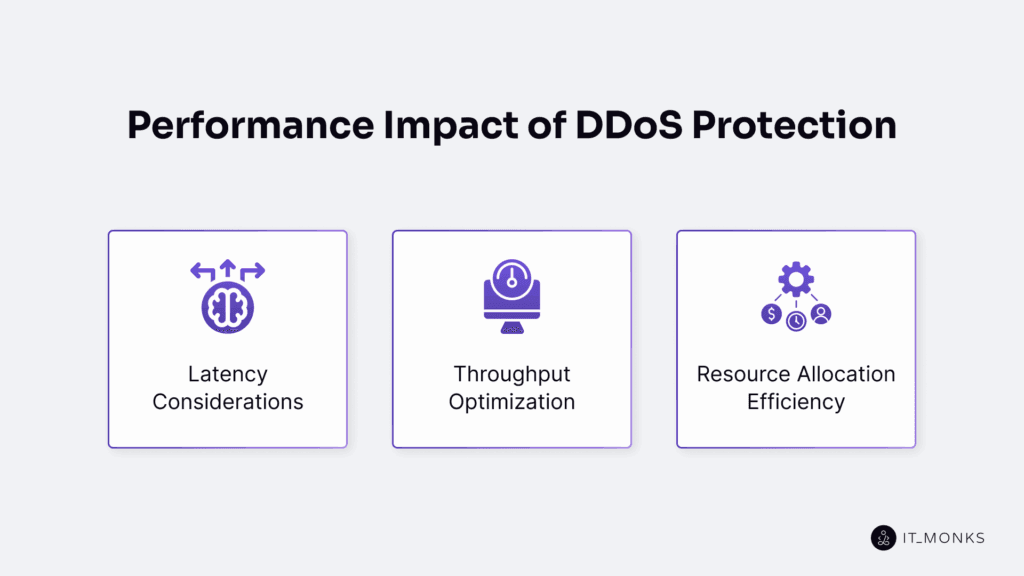
DDoS protection in enterprise hosting introduces operational overhead even during periods of normal traffic. These systems inspect, filter, and reroute traffic continuously, which directly impacts enterprise website performance across key metrics like latency, throughput, and resource efficiency.
Latency increases are often the result of traffic filtering and routing decisions made by scrubbing systems. Even without an active attack, packets pass through inspection layers that typically add 1–2 ms of delay under normal load conditions. Such latency accumulates in transaction-heavy systems, especially when processing packets at high rates (e.g., 10–40 Mpps). In high-frequency transaction environments, these small increases can degrade user experience or affect time-sensitive operations.
Throughput may drop by 3–5% when traffic is continuously routed through scrubbing centers or limited at entry points. Enterprise environments relying on high-volume data flow can experience reductions in transfer capacity, especially if filtering systems aren’t scaled properly or lack distributed load handling.
Resource utilization grows as protection processes run continuously. Stateful inspection, signature matching, and anomaly tracking consume CPU and memory, either on edge appliances or internal servers.
Typical CPU utilization can increase by 10–15% during continuous inspection, depending on traffic volume and inspection depth. Over time, this can impact hosting efficiency and increase infrastructure costs if not managed with adaptive routing, offloading, or hardware acceleration.
While these impacts are inherent, they are not unmanaged. Enterprise hosting providers reduce overhead using methods such as distributed filtering, over-provisioned bandwidth, and hardware-assisted inspection. These mitigations aim to balance protection effectiveness with sustained user experience and SLA compliance, keeping protection active without noticeable slowdowns.
Latency Considerations
Latency considerations are the evaluation and management of the added delay (in milliseconds) introduced by DDoS protection systems in enterprise hosting. This delay, typically around +2.5 ms during routine scrubbing, must remain within defined latency thresholds to avoid breaching SLA response time limits.
Latency increases are influenced by factors such as scrubbing node distance, packet inspection depth (in bytes), filtering load, and routing complexity. Longer routes or higher inspection depth result in higher packet processing times and greater total latency.
Enterprises apply multiple strategies to minimize these latency impacts and maintain SLA compliance. To manage this, they use localized scrubbing to reduce geographic delay, hardware acceleration to cut inspection time to microseconds, and distributed filtering to prevent overloads. Smart routing minimizes hop count and path length, keeping packet delivery efficient.
These strategies help maintain acceptable latency overhead, under 5 ms even under stress, so the enterprise website stays responsive and SLA-compliant during both normal and attack conditions.
Throughput Optimization
Throughput optimization in enterprise hosting is the process of maximizing data transfer capacity (Gbps) while DDoS protection measures are active.
Here, throughput refers to the amount of legitimate traffic successfully processed per second. Optimization means reducing bottlenecks caused by mitigation layers. Without tuning, these layers can limit delivery capacity more than the attack itself.
This tuning ensures that throughput optimization acts not just as a buffer but as a core safeguard for enterprise website uptime, directly linking to service-level guarantees in DDoS protection SLAs.
Key factors include filtering rate in packets per second (Mpps), available scrubbing center bandwidth, bandwidth overhead from protection layers, and load balancing precision. Compression and caching can reduce traffic volume, easing stress on the system.
Enterprise strategies often involve over-provisioning capacity, leveraging hardware acceleration via FPGA or NPU, and geographically distributing filtering nodes to sustain peak throughput even under mitigation load. These strategies are typically validated through performance testing for enterprise hosting, ensuring the system can maintain throughput targets under simulated DDoS conditions. Parallel processing pipelines and multi-path routing further enhance the system’s ability to handle extreme traffic conditions.
Well-optimized systems preserve a large portion of baseline throughput, often above 95%, during mitigation. For instance, under a 1 Tbps volumetric attack, a tuned infrastructure may sustain 950 Gbps of clean throughput, demonstrating effective capacity utilization and routing resilience. This keeps enterprise websites responsive, protecting service levels and user experience during active defense.
Resource Allocation Efficiency
Resource allocation efficiency is the ability of enterprise hosting to use CPU, memory, and network capacity effectively during DDoS protection, ensuring that mitigation processes don’t starve legitimate workloads of resources. It focuses on sustaining website performance while filtering malicious traffic, without exhausting resources needed by legitimate workloads.
During an attack, enterprise hosting systems allocate CPU and memory specifically to packet inspection, filtering, and traffic logging, tasks which must be optimized to avoid impacting core application performance. Efficiency means keeping CPU usage below 70% and memory usage under 65% during peak load, while maintaining support for the maximum number of concurrent sessions without drops.
Bandwidth allocation is similarly prioritized, with critical traffic streams sustained at predefined throughput thresholds to prevent starvation of user-facing applications.
Several factors influence this balance: hardware acceleration can reduce processing strain, process prioritization ranks business-critical tasks higher, and load shedding drops low-value traffic early. Enterprise setups often rely on elastic provisioning, traffic classification, and priority queuing to adjust allocation dynamically. These techniques form the core of infrastructure-level optimization strategies, ensuring that resource-intensive mitigation processes scale without degrading application responsiveness.
Such efficiency directly supports SLA targets and site stability. Inefficient resource provisioning during mitigation can degrade enterprise hosting performance more severely than the attack itself by interrupting service continuity for legitimate workloads.
Compliance and Regulatory Considerations
Compliance and regulatory considerations in enterprise hosting DDoS protection ensure that security measures adhere to legal and industry requirements. For enterprise websites, especially in regulated sectors, this isn’t optional. Failure to document compliance can lead to audit failures, legal penalties, and reputational damage, even when technical defenses succeed.
Technical defenses must support policy-level obligations, or the risk shifts from downtime to non-compliance. These defenses must be configured to verify audit log retention and enforce incident response obligations as defined by applicable standards.
Frameworks like ISO 27001, PCI DSS, and SOC 2 require that DDoS protection maintain system integrity, preserve audit logs, and support clear incident response. A mitigation system that interrupts log generation or access tracking violates core requirements. For example, ISO 27001 demands audit log retention over defined timeframes (e.g., 90 days), while SOC 2 links availability directly to incident detection and response windows.
On the legal side, data protection laws such as GDPR and NIS2 impose time-bound incident reporting obligations on enterprises. GDPR Article 33 mandates disclosure within 72 hours if personal data is affected, while NIS2 shortens this to 24 hours for essential service providers. In California, the CCPA enforces legal liability for service disruptions that compromise consumer data availability or traceability.
If DDoS protection undermines data availability or auditability, it violates compliance mandates and triggers regulatory exposure.
Compliance hinges on 2 pillars: security standards and data regulations. Together, they shape DDoS mitigation not only as a technical layer but as a verifiable, reportable component of enterprise risk management.
Mitigation strategies must demonstrate alignment with SLA enforcement, logging policies, and regulatory documentation practices to pass audits in high-stakes industries. Without this alignment, even a blocked attack can translate into a failed audit.
Industry Security Standards
Industry security standards are the formalized frameworks and benchmarks that guide how enterprise hosting security is implemented and maintained, particularly for DDoS protection. These standards formalize expectations for system resilience, traffic handling, and incident response.
ISO/IEC 27001 requires documented mitigation procedures and annual audits. Certification spans three years, with surveillance audits each year to confirm control effectiveness. DDoS protection measures under this standard must be clearly mapped within the provider’s information security management system.
PCI DSS applies where payment processing is involved. It requires strict access controls, monitored network activity, and a minimum log retention of 90 days. DDoS-related logs, such as abnormal traffic spikes, fall under its audit scope.
SOC 2 Type II evaluates the consistent operation of controls over time. It includes control categories such as uptime monitoring, access enforcement, and response workflows relevant to DDoS incidents. The audit window usually ranges from 6 to 12 months.
NIST SP 800-53 provides control categories that include system-level protections like traffic filtering and rate limiting. Hosting providers must maintain technical documentation for these controls to support audit readiness. These controls are typically categorized under DDoS mitigation in audit mappings, particularly where continuous availability and uptime assurances are in scope.
CSA STAR targets cloud-specific risks. Its maturity model supports continuous monitoring and regular assessments that often include DDoS resilience reviews. CSA STAR Level 2 includes third-party audits and supports certification renewal cycles that typically span 1–3 years, depending on provider maturity.
Auditable certifications provide external validation that hosting environments meet enterprise-grade reliability expectations. They confirm that DDoS protections are active, documented, and routinely tested, supporting trust in SLAs and reinforcing compliance with enterprise governance standards.
Data Protection Regulations
Data protection regulations are the legal requirements governing how enterprise hosting providers handle, store, and process data, including during DDoS mitigation events. These rules define how providers must deploy inspection, logging, and traffic filtering to ensure compliance with privacy standards.
Key laws include GDPR (EU), CCPA (California), NIS2 (EU), HIPAA (US healthcare), and LGPD (Brazil). Each governs specific aspects like user consent, data minimization, logging scope, cross-border transfers, and breach reporting. Together, they define the core compliance requirements for enterprise hosting, especially when handling sensitive data during attack mitigation. These attributes directly govern enterprise compliance workflows, such as anonymizing traffic logs, enforcing jurisdictional restrictions, and adhering to time-bound reporting obligations. For example, GDPR requires incident notification within 72 hours under Article 33.
Enterprise DDoS defenses often involve temporary traffic logging and analysis. To comply with regulations like GDPR and HIPAA, logs must be anonymized, stored only for defined periods (commonly 30–90 days), and processed in approved jurisdictions.
Scrubbing centers are distributed across GDPR or HIPAA-compliant zones to maintain lawful data residency. For example, leading providers maintain infrastructure across at least 5 compliant jurisdictions to ensure lawful traffic processing.
Operational measures include pseudonymizing user identifiers, enforcing regional data flow restrictions, and integrating alert systems for timely reporting. These measures reduce regulatory exposure for enterprise hosting providers, reinforcing trust while maintaining effective mitigation.
Contact
Don't like forms?
Shoot us an email at [email protected]

